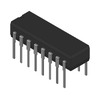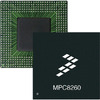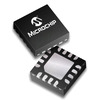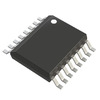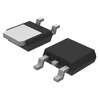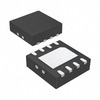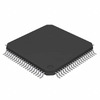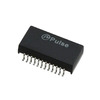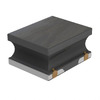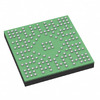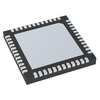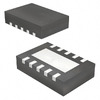HomeBlog2N3906 Transistor Comprehensive Guide-Pin Configurations, Application Scenarios and Equivalents, and How to Test
2N3906 Transistor Comprehensive Guide-Pin Configurations, Application Scenarios and Equivalents, and How to Test
Catalog
Brief Overview of the 2N3906

The 2N3906 transistor is well-known for its PNP bipolar junction configuration. It is commonly used in applications requiring low current and power along with moderate voltage levels, such as low-power switching and amplification scenarios. It is designed for operations that require low power consumption and current specifications within a moderate voltage range while maintaining rapid performance standards. This device is packaged in a TO-92 case with a plastic body structure. It has a maximum rated operating current of 200mA, voltage of 40V, and power capacity of 625mW. The collector current of the 2N3906 ranges from 10 μA to 100 mA, adapting to a wide range of current gains from minimal to substantial.
Features and Technical Specifications of 2N3906
- - Complementary to the 2N3904/MMBT3904 bipolar transistors
- - Collector-Emitter Voltage (VCE): 40V
- - Emitter-Base Voltage (VBE): 5V
- - Continuous Collector Current (IC): 200mA
- - Operating temperature range: -55 to 150°C
- - Base Current (IB): Maximum 5mA
- - DC Current Gain (hFE): 60
- - Enclosed in a To-92 package
- - Collector-Base Voltage (VCB): 40V
- - Lead-free package options available
- - Collector-Emitter Saturation Voltage: 0.25V
- - Maximum Power Dissipation: 250mW
Pin Configuration and Schematic of the 2N3906
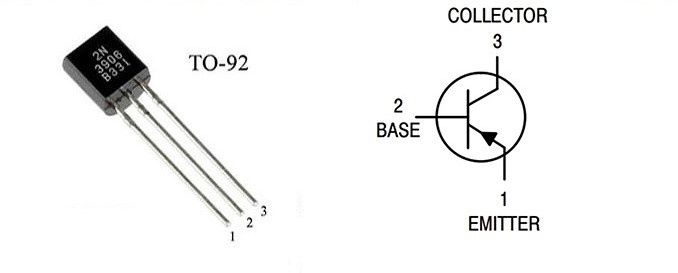
|
Pin Number |
Pin Name |
Description |
|
1 |
Emitter |
Current Drains out through the emitter |
|
2 |
Base |
Controls the biasing of transistor |
|
3 |
Collector |
Current flows in through the collector |
Applications of the 2N3906
The 2N3906 is a commonly used PNP transistor, typically employed for high-speed switching and amplifying. It operates in three modes:
Active Region: Here, the 2N3906 acts as an amplifier. The emitter-base junction is forward-biased allowing current to flow from the emitter to the base, whereas the collector-base junction is reverse-biased, which blocks current flow and thus amplifies the signal passing through the transistor.
Saturation Region: In this state, the transistor acts as a closed switch. Both the emitter-base and collector-base junctions are forward-biased. This setup pushes the emitter-base voltage above 5 volts, essentially turning off the current flow and making the transistor non-conductive.
Cutoff Region: Here, the transistor acts as an open switch. Both junctions are reverse-biased, with the emitter-base voltage being less than 5 volts, making the transistor fully conductive. Typically, the base is directly connected to the ground for ease of this configuration.
Common application scenarios for the 2N3906 transistor include:
- - High to low current load switching
- - Inverters and converter circuits
- - Darlington pair circuits
- - Alarm systems or dual LED setups
- - Low-power amplification circuits
- - Flash units
- - High-speed switching applications
- - General-purpose audio amplifiers
- - Suitable for loads with peak voltages up to 40V
Circuit for 2N3906
An example is a switch
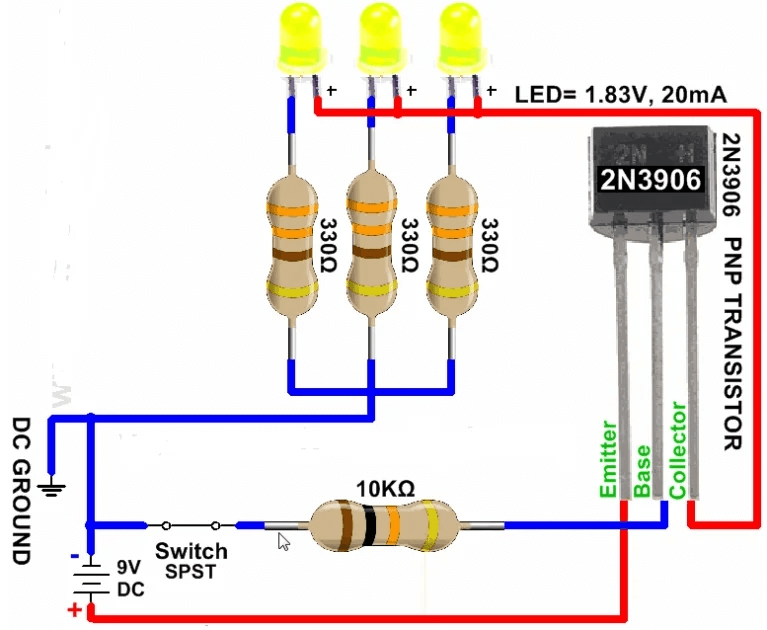
In the above diagram, when the switch is closed, the LED will be on, which means that both junctions will be forward biased, and current will flow from the emitter to the collector, and then the LED will emit bright light. Similarly, when the switch is open, both junctions will be reverse-biased and no current will flow from the emitter to the collector, so the LED will be off. A 10kΩ resistor is placed in series with the base to limit the base current.
2N3906 Delay and Rise Time Test Circuitry
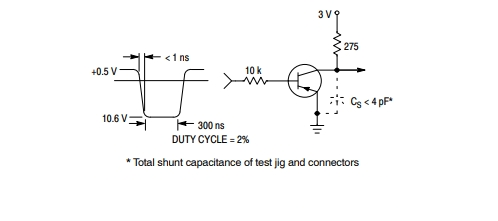
2N3906 Storage and Falling Time Equivalent Test Circuit
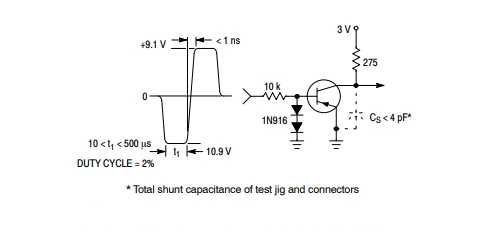
How to Test the 2N3906
Before starting to test the 2N3906 transistor, ensure you have the following tools:
- - Multimeter
- - DC power source
- - Resistors with known resistance values
- - Connecting wires
The testing process for the 2N3906 transistor involves several steps:
Setup Your Equipment:
Configure your multimeter to diode test mode to check semiconductor functionality. Also, connect the DC power supply to appropriate contacts to provide the necessary voltage for testing.
Connect the Transistor:
Properly insert the 2N3906 transistor into a breadboard or test socket, ensuring correct orientation and firm placement, and connect the DC power supply's wires to corresponding transistor pins (emitter, base, collector).
Measure:
Use the multimeter to measure the voltage and resistance across various terminals of the transistor.
Result Analysis:
Compare your obtained values with expected standards to evaluate if the measurements align with the 2N3906 transistor's specifications. Deviations might indicate potential defects or malfunctions within the transistor.
Testing for bipolar devices like the 2N3906 is based on their structure comprising two semiconductor junctions sharing a common terminal (base), similar to a pair of diodes. For PNP transistors (like the 2N3906), the cathodes of these equivalent diodes connect to the base. If both simulated diodes show normal behavior, the transistor is considered to be functioning correctly.
Safety Tips When Using Transistors:
- - Avoid operating transistors under conditions exceeding 20V or 700mA to prevent damage.
- - Use base resistors of appropriate values to keep the base current within safe limits specified in datasheets or reference materials.
- - Do not expose transistors to temperatures above 150°C to avoid thermal damage.
2N3906 vs. BC557
The BC557 transistor is similar to the 2N3906, sharing key characteristics suitable for various applications. The 2N3906 is renowned for its high collector-emitter voltage (VCE), which enables it to efficiently handle higher voltages during operation. Key differences and operational insights include:
High Collector-Emitter Voltage:
The 2N3906 can maintain a high voltage across its collector and emitter terminals, often crucial in circuits requiring high-voltage handling.
Gain Value:
The gain (β) of the 2N3906 is about 300, indicating the transistor's ability to amplify input signals. However, a gain of 300 might not be sufficient for high-power amplifier circuits, which require higher beta values for desired amplification.
Application Limitations:
Due to its gain limitations, the 2N3906 may not be the best choice for high-power amplification tasks, as more potent amplification is needed to effectively drive large outputs.
Equivalents/Substitutes for the 2N3906
2N3906 Package
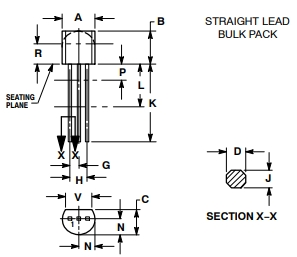
Download Datasheet
Click here to download the STMicroelectronics 2N3906 PDF-Datasheet: STMicroelectronics 2N3906
Frequently Asked Questions [FAQ]
1. What is the difference between 2N3904 and 2N3906?
Both are bipolar transistors, with 3904 being NPN and 3906 being PNP, indicating different schematic symbols and polarity functions.
2. What is the maximum base current of 2N3906?
The maximum base current is 5mA with a Collector Base Voltage of 40V.
3. What is the difference between PNP and NPN?
PNP transistors turn ON by a low signal, whereas NPN transistors turn ON by a high signal. The 'P' in PNP indicates the polarity (positive) at the emitter and the 'N' in NPN indicates the polarity (negative) at the base.
About us
ALLELCO LIMITED
Read more
Quick inquiry
Please send an inquiry, we will respond immediately.
→ Previous

The CR3032 battery, a coin lithium battery, is a cornerstone of contemporary electronic design due to its compact form and robust capabilities. With a 30mm diameter and 3.2mm height, the CR3032 has uniquely suited to power a wide array of portable electronic devices, from everyday gadgets to critica...
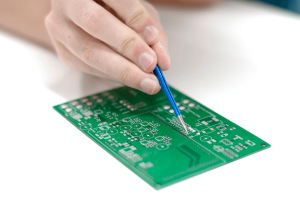
In the dynamic field of electronics manufacturing, the adoption of Surface-Mount Devices (SMD) represents a significant shift toward more efficient, compact, and high-performance technologies. SMDs, crucial elements in modern circuit design, are directly mounted onto the surface of printed circuit b...
→ Next

CR3032 – The First Choice for Equipment with Higher Energy Demands
on April 16th

What is SMD Packaging?
on April 12th
Popular Posts
-

What is GND in the circuit?
on January 1th 3272
-

RJ-45 Connector Guide: RJ-45 Connector Color Codes, Wiring Schemes, R-J45 Applications, RJ-45 Datasheets
on January 1th 2815
-

Understanding Power Supply Voltages in Electronics VCC, VDD, VEE, VSS, and GND
on November 20th 2642
-

Fiber Connector Types: SC Vs LC And LC Vs MTP
on January 1th 2265
-

Comparison Between DB9 and RS232
on January 1th 1882
-

What Is An LR44 Battery?
Electricity, that ubiquitous force, quietly permeates every aspect of our daily lives, from trivial gadgets to life-threatening medical equipment, it plays a silent role. However, truly grasping this energy, especially how to store and efficiently output it, is no easy task. It is against this background that this article will focus on a type of coin cell battery that may seem insignificant on the...on January 1th 1846
-

Understanding the Fundamentals:Inductance Resistance, andCapacitance
In the intricate dance of electrical engineering, a trio of fundamental elements takes center stage: inductance, resistance, and capacitance. Each bears unique traits that dictate the dynamic rhythms of electronic circuits. Here, we embark on a journey to decipher the complexities of these components, to uncover their distinct roles and practical uses within the vast electrical orchestra. Inductan...on January 1th 1808
-

What Is RF and Why Do We Use It?
Radio Frequency (RF) technology is a key part of modern wireless communication, enabling data transmission over long distances without physical connections. This article delves into the basics of RF, explaining how electromagnetic radiation (EMR) makes RF communication possible. We will explore the principles of EMR, the creation and control of RF signals, and their wide-ranging uses. The article ...on January 1th 1801
-

CR2430 Battery Comprehensive Guide: Specifications, Applications and Comparison to CR2032 Batteries
What is CR2430 battery ?Benefits of CR2430 BatteriesNormCR2430 Battery ApplicationsCR2430 EquivalentCR2430 VS CR2032Battery CR2430 SizeWhat to look for when buying the CR2430 and equivalentsData Sheet PDFFrequently Asked Questions Batteries are the heart of small electronic devices. Among the many types available, coin cells play a crucial role, commonly found in calculators, remote controls, and ...on January 1th 1799
-

Comprehensive guide to hFE in transistors
Transistors are crucial components in modern electronic devices, enabling signal amplification and control. This article delves into the knowledge surrounding hFE, including how to select a transistor's hFE value, how to find hFE, and the gain of different types of transistors. Through our exploration of hFE, we gain a deeper understanding of how transistors work and their role in electronic circu...on November 20th 1782








